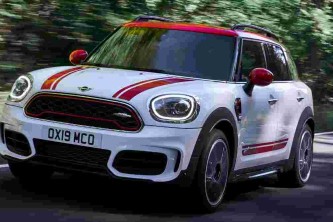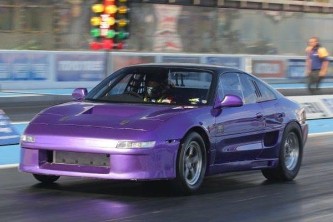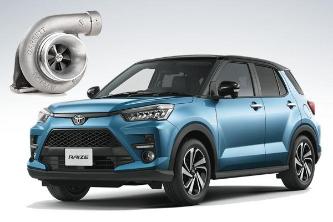crankshaft keyway
crankshaft keyway Related Articles

FAQ: Is auto start-stop bad for your car?
Hence the engine won’t experience the same wear as it would during a cold start.Not a crankshaft
Review: The Nissan Serena will not inspire you, but few other MPVs can do a better job
braking.The Eco Motor also doubles as a starter motor, providing 48 Nm of torque assistance to the crankshaft
crankshaft keyway Post Review
Mechanist Monday - Precisely indicating the crankshaft, getting ready to mill a keyway grove on the Bridgeport! https://t.co/3LPHd9eREY
Had to Order a new Crankshaft Woodruff Key for Crank Keyway...🧐 #mustanggtbuild #fordperformance #builtbottomend #nitrousbuiltengine #2VEnginebuild #smallblock #ford #streetcar #garagebuilt https://t.co/WpPOOp3e7z
JB Weld, a heat lamp, heat gun, and crankshaft keyway. Hope this works again. https://t.co/G5czCN1Mf1
Yamaha Banshee Crankshaft Primary Drive Gears Washer Nut Keyway Water Pump Crank https://t.co/0uF1tnWpIl https://t.co/HIfrrlqNud
Dont even think about the timing belt, water pump, or cylinder head on the new little Ford engines without the cam/crank tools. No keyway on the crankshaft. https://t.co/xoEN6mKlFe
Briggs & Stratton 44S877-0002-G1 724cc 24.0 Gross HP Professional Series 1-Inch Diameter by 3-5/32-Inch Length Crankshaft and Keyway Tapped 7/16-20-Inch https://t.co/irkRfmZeVc https://t.co/7ZARYPrVQx
Jonathan S. from Cresap Automotive Machine in Cumberland, MD cut this SCAT #crankshaft for a double keyway. 👍🏼 https://t.co/0zrwyMgznT https://t.co/VcPcCj1BBz
ad: Briggs & Stratton 356447-0596-F1 570cc 18.0 Gross HP Vanguard Engine With A 1-Inch Diameter X 2-29/32-Inch Length Crankshaft, Keyway, Tapped 3/8-24 Try our 570cc 18.00 Gross HP Vanguard Vertical Engine with a 1-inch diameter by 2-29/32-inch... - https://t.co/5ft8cxgTKG https://t.co/UM8oivTKYx
eBay: 1999 Mazda MX-5 Miata 10th Anniversary Needs repair: Crankshaft keyway damage https://t.co/f1BUOogbmK https://t.co/PggRaJAEsN
Race Billet, Dbl Roller, with 3-Keyway Crankshaft Sprocket, 3 Bolt, 1 Se fits 20 https://t.co/aJevu9kWTs
crankshaft keyway Q&A Review
How can I set the crankshaft and camshaft marks when replacing the timing belt on Ford escape 2013 engine 1.6?
By turning the crankshaft keyway to TDC and the camshaft to compression stroke the factory markings should begin to set .
What is a position of the crankshaft and camshaft when setting a valve timing?
It is best to look at the manual and ascertain which cylinder it is timed on and also determine which is No1 cylinder (they are not always at the front of the block). The usual method is the No1 cylinder at TDC and the crankshaft keyway by convention is machined in line with TDC. The camshaft has the keyway machined to be upwards at or near the timing mark but should be on the gear or in some odd cases thete will be a mark on both the crankshaft grar and camshaft gear which must be together o...
Do ignition coils on small motors (lawn mowers, etc.) determine timing?
They're set in position & are usually electronic these days, they do have electronic circuitry built in which determines when the spark plug will actually fire. I found that with a Stihl hedge that I rebuilt & replaced the ignition coil on that I had to get the right coil for that serial number of machine because after a certain serial number they changed the crankshaft keyway position so each ignition coil actually fires at a different point in time since they're screwed onto the same spot on the engine. So if ordering either a new crankshaft, ignition coil or both make sure that it matches up with the same serial number on the machine despite being the same model,you can use both the newer crankshaft & ignition coil in the older machine,not the newer crankshaft or ignition coil !
What are the top reasons for my crankshaft to be spinning while the timing belt doesn't move at all?
If your car has a belt used for timing, it means that the crankshaft (attached to the pistons) and the camshaft(s) (attached to the valves) are running in time together by way of a rubber belt, with many horizontal ribs to keep the sprockets in time with one another. This allows the engine to intake, compress, create power, and exhaust, when it is supposed to. Your engine will not run properly if the timing belt is slightly out of adjustment; it will not run at all if it is entirely out of adjustment. Your engine is not running if the timing belt is not moving. If it is spinning while you are attempting to start the car, and the timing belt is not, I would think that the ribs have become detached from the belt, the sprocket has become loosened from the crankshaft (keyway broken, diamond washer not sticking due to loosened crank bolt?), the tensioner is not working properly (loss of oil pressure, broken spring?). It could be that one of your cams has become seized, and ruined the ribs on the belt at the crank. it could be that the crank itself is split (very unlikely). Are you sure that you are looking at the timing belt? the serpentine belt looks similar, and if your car is running, than the timing belt must be moving.
What are the causes of white smoke on heavy acceleration but not on idling?
A brand new diesel engine running at full load will experience a little bit of blow-by upon startup. Blow-by is a condition where diesel fuel, air and vapor are pushed past the rings into the crankcase of the engine. Correct pressure should be maintained in the cylinder chamber in order for proper combustion to occur. In a new diesel engine the rings need time to seat properly and develop an air-tight seal. After a short period of break-in hours under load, the blow-by problem should correct itself. Consequently, ,a proper running diesel engine, should produce no visible smoke from the exhaust. If there is smoke coming from the exhaust it could indicate a more serious problem with the engine. This article will help diagnose the underlying causes of diesel engine smoke. Diesel engine smoke comes in three colors: white, black and blue. Consistent smoke coming from the exhaust most likely indicates a deeper internal problem with the engine. A small puff of smoke during quick acceleration is acceptable with older diesel engines due to a lag before the turbocharger’s air flow can match the increased volume of diesel fuel injected into the cylinders. Newer electronic diesel engines with ,common rail injectors, simultaneously match the speed of the turbo with the metered flow of diesel fuel into the cylinder. White Smoke: White smoke coming from the exhaust usually points to one point of failure: the injectors. Usually, white smoke indicates that the diesel fuel is not burning correctly. Unburned diesel fuel will make its way through the exhaust completely unused. Be careful of white smoke as it will irritate your eyes and skin. If white smoke occurs during a startup in freezing temperatures, then goes away, it usually indicates frozen deposits of soot which expanded around the rings then burned away once the engine warmed up. The ,use of glow plugs during cold starts,and/or the use of a flushing solvent to remove engine sludge is recommended. Common Causes of White Smoke: • Damaged Injectors • Faulty Injection Timing • Damaged Crankshaft Keyway • Damaged Timing Gear • Low Cylinder Compression • Damaged Rings or Cylinder Liners • Water mixed in the Diesel Fuel (Cracked Head Gaskets, Cylinder Head or Block) • Damaged Fuel Lines • Low Fuel Pressure to the Fuel Pump • Damaged or Incorrect Fuel Pump Timing
Is a crankshaft pulley and harmonic balancer the same thing?
No! They are two different things. The harmonic balancer slides onto the front of the crankshaft which has a keyway on it to keep it from slipping and a bolt and wide washer holds it in place. The reason it must not slip is that there is a timing mark eteched into it that signifies when the number one position is at top dead center ( TDC). The balancer is usually made up of two disks with a rubber piece between them to absorb vibrations. This two piece assembly is carefully balanced so as not to cause any vibrations as well. The crankshaft pulley is attached to the harmonic balancer assembly by 3–4 bolts. It has one or several groves in it to provide a source to drive the fan belt, or belts.
Can a wrong fitting of a timing belt harm a valve?
Question: “Can a wrong fitting of a timing belt harm a valve?” If you have what is called an INTERFERENCE ENGINE, ,YES! This is an engine with the timing belt cover removed and the timing belt and cam gears exposed. Note the two lines on the timing belt? If you look closely they each line up with indentations on the inner timing cover and with punch marks on the timing gears. Those marks have to line up with each other when the timing belt is installed and inspected ,after ,the timing belt tensioner has been adjusted. The two gears control the position of the camshafts. The timing belt, if properly installed, synchronizes the position of the camshafts with the position of the crankshaft. The crankshaft controls, via the connecting rods, the position of the pistons in the cylinders as those pistons come up towards the cylinder head and the valves. The camshafts control the position of the valves as they come out of the cylinder head towards the piston which is coming up in the bore. Got that? Think of it as a mechanical ballet in which the pistons repeatedly run towards the protruding valves which retreat back into the cylinder head just before colliding with the advancing pistons. This precision ballet is performed thousands of times per minute. The timing of this ballet is controlled by how the teeth on those timing gears line up with the teeth on the timing belt. In a NON-INTERFERENCE engine if the timing belt is improperly installed so that after tensioning, with the engine at TDC (Top Dead Center—the highest position of the piston in the bore) on number 1 cylinder, the timing marks on the back timing case do NOT line up with the punch marks on the timing gears, the engine will not run properly. But it won’t be seriously damaged as the design of the engine permits the top of the piston to clear the open valves regardless of the position of the crankshaft or the camshafts. There is sufficient clearance between the piston at the top of its stroke and the valves when fully open to prevent damage even if the timing belt position and valve timing are way off. In an INTERFERENCE engine, however, this clearance does not exist. On each revolution of the crankshaft and camshafts the choreography is such that the piston and valves just miss colliding because the valves close just before a collision might occur. In these engines the camshaft timing has to be precise—the timing belt must be properly installed. If not the piston will impact the valves, bending them and possibly damaging the piston. This is what you might see if you take the cylinder head off of an interference engine that has been started with an improperly installed timing belt. The removed valves would look like this. And this is what could happen to the piston. Misalignment of the timing belt with the timing gears, and consequent improper camshaft and valve timing can be caused by a number of factors. An old and/or worn timing belt can stretch and cause the timing gear to “jump a tooth” putting the camshaft out of time. A tooth can break off of an old timing belt causing the cam gear timing to vary. Once one tooth is damaged it is very easy for the cam gear to start eating other teeth on the timing belt. A timing belt can slip its position on the timing gears if the timing belt tensioner is worn or improperly adjusted. The timing can fluctuate because the keyway mating the timing gear via a woodruff key to the crankshaft is worn causing the timing to fluctuate. This is rare, but it does occur. The timing of the valves can be out of synchronization with the position of the crankshaft and the pistons because the timing belt was improperly installed. This often occurs because the position of the camshaft gears was not checked ,after, the timing belt tensioners were adjusted. Timing belts are used on many engines for two reasons: 1. They are much cheaper to manufacture than the alternatives, and 2. they are quieter than chains and much quieter than timing gears. But timing belts have limited lifespans and must be replaced. When to replace a timing belt should be determined by the service requirements specified by the manufacturer and printed in the manual. But the average life expectancy is somewhere between 60K and 100K miles and 7 to 10 years. If you buy a used car and do not have documented proof that the timing belt was recently replaced and the vehicle mileage is near or beyond those figures you must have the timing belt replaced. Timing belt replacements are relatively expensive. The belt itself is not expensive. But the number of parts that must be removed just to get at the timing belt makes the job very labor intensive. Thus, it is always reasonable when having a timing belt service performed to simultaneously replace ALL of the serviceable parts that were exposed during the timing belt service. This list includes: all seals, all gaskets, the timing belt tensioners, timing belt idler pulley, and the water pump. Because of the possibility of catastrophic damage if an error is made, I strongly recommend that, unless he is a very experienced and fully qualified engine mechanic, that an owner take his car to the dealership for a necessary timing belt replacement. The dealership mechanics are completely familiar with the technical details of timing belt replacement on your car and have performed the task repeatedly. That is not necessarily true for the workers at your local garage. This is not a DIY job.
Is it possible to use keyless coupling on a keyed motor shaft? What will be the downsides using keyless couplings on a keyed shaft?
I have never tried this but the keyway is there for a reason. Usually to provide a weaker point of failure to prevent severe damage to the drive system. In the example of a lawn mower blade, the blade adapter is keyed to the crankshaft so if you strike an object such as a tree stump, the key will shear preventing catastrophic damage to the engine (broken crankshaft).
Is straightness necessary to put while designing a keyway in a shaft?
Well, first off…I am not 100% certain I understand your question. It is VERY POORLY worded. I will assume you want to know if a Woodruff key/keyway has to be 100% IN-LINE with the crankshaft or driven shaft machinery. This is simply because there would be no way possible to install/remove the pulley, flywheel or whatever else is being driven by the shaft. I’m trying to describe this as simple as possible, but without being able to add a picture to “explain” what I mean, I think the majority of people who read this can understand.
 HOME
HOME 

